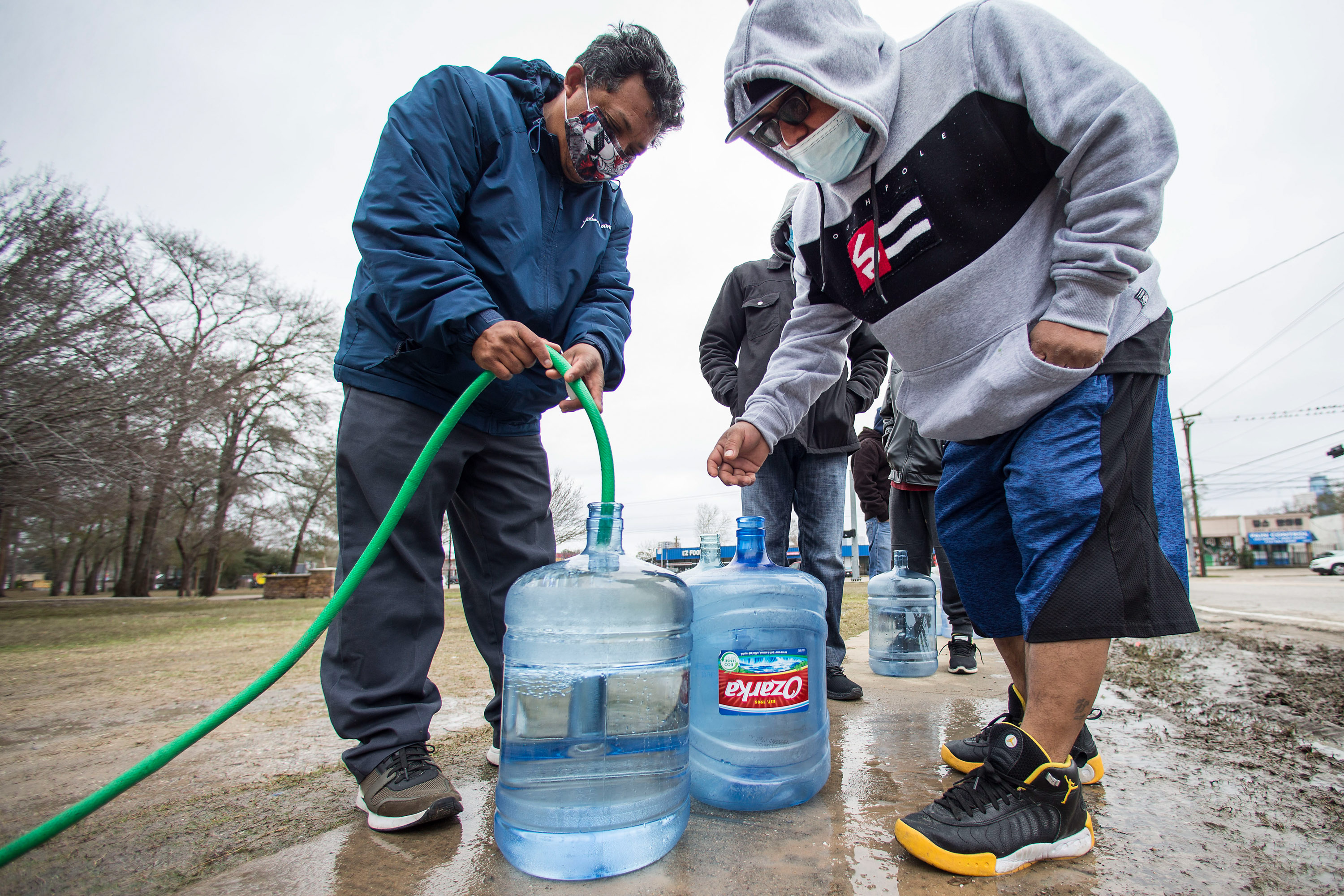The government failed Texans—so people on the internet stepped in
But activists, working through a record-breaking freeze, say it shouldn’t have to be this way.

On Valentine’s Day, Texas plunged into a polar vortex the likes of which hadn’t been seen since 1899. Freezing temperatures led to widespread power outages. Homes more used to the swampy heat were useless against the wind and cold, with pipes bursting and ceilings caving in. Where water, clothing, and food were being distributed, lines snaked around the block. Hundreds of people in Texas have been made homeless so far. At least 30 have died.
The official response was sluggish and inadequate. It took until Thursday for the federal government to step in and send generators, water, and blankets to affected areas, and local municipalities struggled to coordinate efforts to clear roads and restore access to water.
But within hours of the storm’s onset, a predictable pandemic-era sequence of events took place: people stepped into the void left by the government. With the pandemic and icy roads preventing them from going door to door to help their neighbors, they created simple, shareable Google docs that went quickly viral on Instagram and Twitter, giving residents in affected communities and beyond instant access to information that bypassed national organizations. Venmo, Cash App, and GoFundMe pages funneled funds directly to those in need.
Mutual aid is not a new concept, long flourishing in marginalized communities. But a year of pandemic-induced crises has trained such groups to react quickly: they know that the first place people will turn in a crisis is the internet.
Mellissa Martinez, a 24-year-old student based in Houston, was without electricity or internet access for 72 hours. But during spurts of Wi-Fi availability, she was able to cobble together the TX Mutual Aid Directory, which lists shelter locations, food pantries, and requests for supplies. Martinez, a member of the Sunrise Movement, a political action committee aimed at fighting climate change, says much of the groundwork for the document was done in January after the Capitol Hill insurrection. “We were showing we need to take care of each other,” she says.
“I have just been updating it whenever I could get any signal at all,” Martinez managed to tell me, before her signal dropped again. When she called back she added, “That’s all I did for 72 hours: just nonstop staring at the page and refreshing it. People needed us to scramble and shoot out the directory.”
Christina Tan, a 22-year-old with Mutual Aid Houston, says the group coordinated within hours. “We knew we had to activate quickly to help folks who were trapped in cold apartments or houses with no way of driving on icy roads,” she says. “We also knew that a lot of folks would be in need of help with electricity bills, burst pipes, medical assistance, and more.”
Mutual Aid Houston has a reliable social media plan that it enacted immediately. “Twitter is appealing since it allows us to update folks live with resources such as restaurants donating food or locations to pick up water; it also lets us talk to people one-to-one through DMs and quickly identify people in need,” says Tan. “Instagram is for visuals, which is useful when directing folks places, and especially for raising money … We primarily use Venmo and Cash App to distribute money directly back to people, although we are exploring ways to reach people without bank accounts or without digital banking.” Tan says the nine-person volunteer team is collaborating constantly on Slack and Zoom.
Not every volunteer is based locally. Ivan Sheth, a 37-year-old in New York, saw the Texas crisis and created Slack and Telegram groups within a mutual aid Google doc to organize people across the country.
Sheth, who is currently unemployed, found it distressing and frustrating to be helpless. “I have more free time on my hands than I want to or know what to do with,” he says. “My fellow Americans are in trouble, and I feel a civic duty to my fellow countrymen and women.”
But it shouldn’t have to be this way—and there is still considerable anger among activists at the government’s slow response. Ice storms may become more frequent as a result of climate change, and officials were warned repeatedly that infrastructure may collapse.
“This is a crisis that needed government action,” Tan says. “Infrastructural problems like the electric grid and road safety are far too massive for grassroots groups to tackle.”
Martinez voices similar frustration. “We don’t have representatives representing our values. They’re willfully being deaf to our cries,” she says. “But I have high hopes for the future.”
Deep Dive
Humans and technology
Building a more reliable supply chain
Rapidly advancing technologies are building the modern supply chain, making transparent, collaborative, and data-driven systems a reality.
Building a data-driven health-care ecosystem
Harnessing data to improve the equity, affordability, and quality of the health care system.
Let’s not make the same mistakes with AI that we made with social media
Social media’s unregulated evolution over the past decade holds a lot of lessons that apply directly to AI companies and technologies.
Stay connected
Get the latest updates from
MIT Technology Review
Discover special offers, top stories, upcoming events, and more.